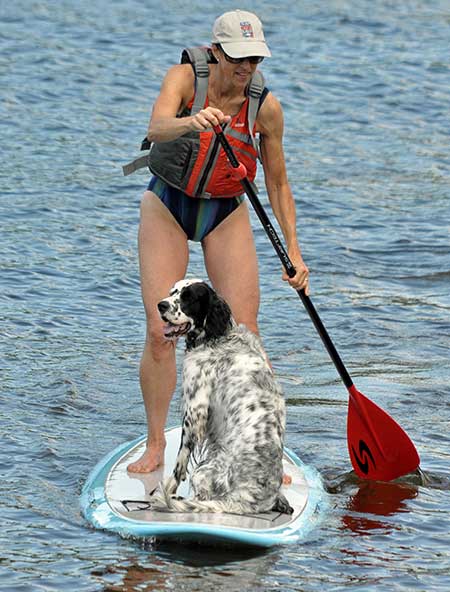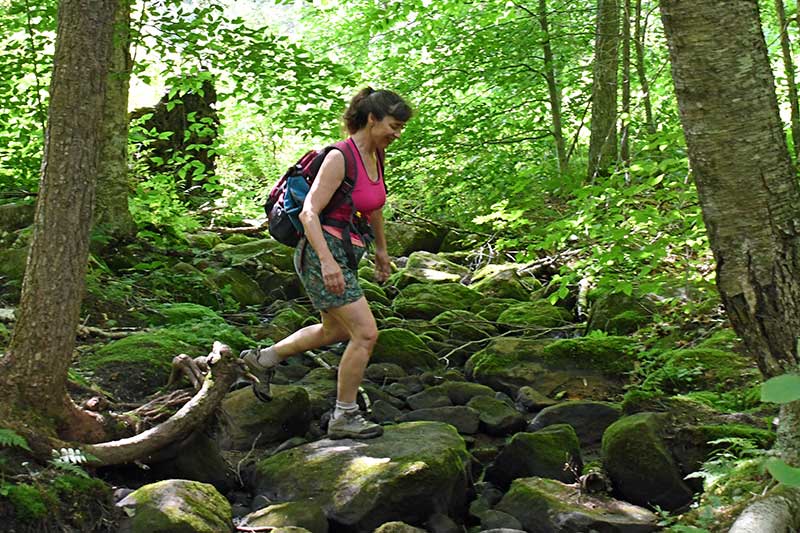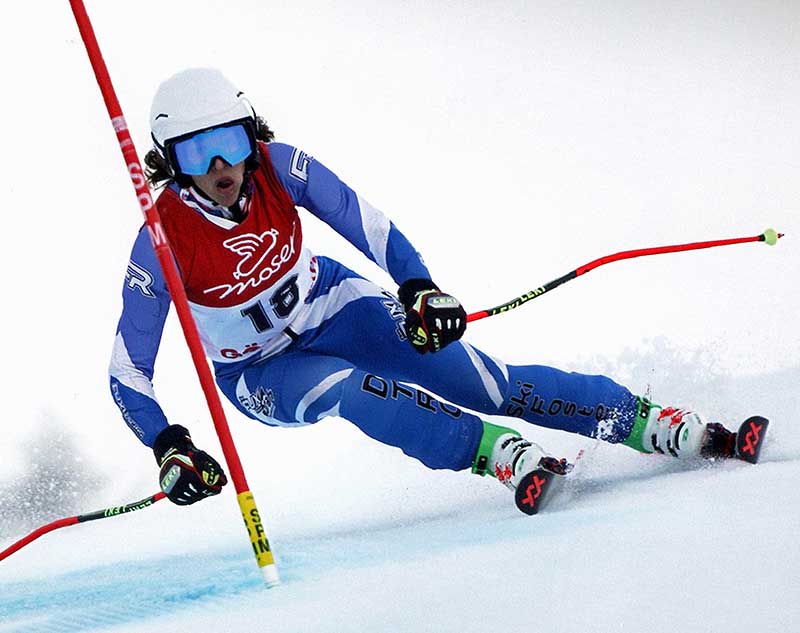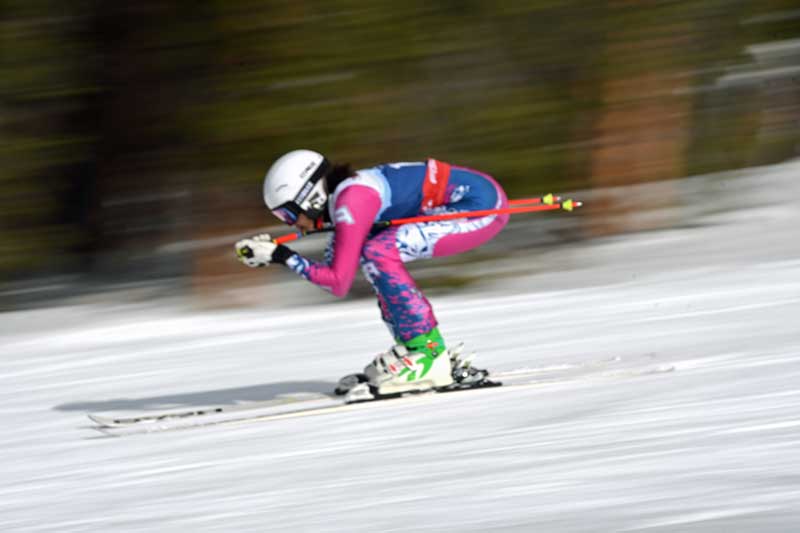IMPROVING QUICKNESS, COORDINATION, AND FLEXIBILITY:
July 7, 2025. Getting in shape for skiing, and especially ski racing as a masters athlete, is an annual cycle of periodic training, meaning concentrating on certain areas of fitness at certain times of the year. It starts each spring by laying a foundation of endurance and stamina, followed by an emphasis on strength. Masters racers are good at this. We run, road bike, hike, and mountain bike. We lift weights and do other exercises to get stronger, especially as the ski season gets closer. Many successful masters athletes of all ages get very fit this way, but do they ski faster?

I’ve watched many masters racers enter the winter who can crank out 30 miles on a bike or log 10 miles and 3,000 vertical feet on an afternoon hike. They can also whip off 50 sit-ups, 50 push-ups, and leg press 250+ pounds, but they’re not the fastest ski racers. Why? Maybe it’s a flaw in their technique or tactics, but it might also be that they’re missing something in their fitness program. These “straight ahead” endurance sports and in-the-gym strength training exercises are valuable, but they shouldn’t be the only aspects of off-season training.
Endurance and strength are only two of the five areas of fitness that contribute to better performance in ski racing. The other three are: 1. Quickness and Agility, 2. Balance and Coordination, and 3. Flexibility.
You’ve probably heard about fast-twitch versus slow-twitch muscles. In our teens and 20s, our muscle make-up is about a 50/50 split between fast-twitch and slow-twitch muscles. As we age, fast-twitch muscles atrophy faster than slow-twitch muscles, decreasing reaction time and explosive power. According to the National Institutes of Health, on average, the ratio changes to about 30/70 fast-twitch to slow-twitch muscle by our senior years, though the rate and percentage of change depends on the person. In this context, the cliché, “use it or lose it,” is true. If you use your fast-twitch muscles, you won’t lose them as quickly, and you’ll lose less of them in total.
HOW TO GET QUICKER
It’s difficult to build muscle once you reach your mid-40s and even harder in your 60s, 70s, and 80s, but you can improve what you’ve still got. Certainly, there are specific exercises to get quicker and more agile, but why not make it more fun? Here’s where other types of cross-training (other sports) come in. In my case, I paddle an SUP and waterski to improve my strength. Both of these sports also help my balance and coordination. I play tennis, seeking out singles matches whenever it’s possible, which improves my lateral quickness and my coordination. We have a knee-high slack line in our backyard. Walking on it improves my balance.
I believe that cross-training, almost any way, makes me a faster skier. If all I did were pushups and run, I would get better and better at pushups and running, but not skiing. If I mix it up with a number of other sports and exercises, it makes me a well-rounded athlete both off and on the slopes.

Just about any sport you do off snow benefits you on snow, some more than others. The key is to pick those activities that will help you improve the areas of fitness in which you are weakest. Need it all? Try Tai Kwando or similar martial arts. Need to be quicker? Play pickleball, racquetball or another sport that rewards quickness. Need better eye-foot coordination? Play soccer, or simply set up dribbling drills around cones. Take a dance class. Or hike on uneven terrain. Need better balance? Try one-legged knee bends with your supporting foot on a Bosu ball instead of the floor.
These are just a few ideas. There are countless ways to cross-train for ski season as long as you think about HOW those activities transfer to skiing. Take golf. It requires strength, coordination, weight transfer, and separation of the upper and lower body. Skiing does, too.
HOW TO IMPROVE YOUR FLEXIBILITY
We also lose flexibility as we age. On the bright side, you can gain it back if you train for it. I don’t mean loosening up for a couple of minutes in conjunction with a sport or workout. I mean focusing specifically on improving your flexibility.

Ski racing requires you to perform in extended positions. Your upper body “separates” from your lower body, turn after turn. In other words, your torso remains upright while your legs move from side to side. Without good flexibility in the legs, hips, and core, you cannot create the angles with your body and thus with the edge angles on your skis that are needed for high performance turns. If you want higher edge angles, which means getting your feet out from your torso more, you probably need to be more flexible.
Likewise, when you crash, being flexible can save you from serious injury.
And then there’s the ability to tuck. Men tend to lose flexibility in the hip area more than women, because women have naturally looser hips and pelvic area. Gals, you can thank your to the ability to have babies for this. That said, women get stiffer, too, as they age, just not as quickly or as much as men do. Many masters ski racers, men and women, think they are in a low tuck, when they’re almost standing.
This photo of me was taken in January 2023, at age 61. That winter, I won my 3rd overall super G title on the FIS Master Cup. The ability to get into a low tuck allowed me to be more aerodynamic in gliding sections of a course.
To improve flexibility, like any workout, you must warm up first. Ride a stationary bike, row, run or get on a treadmill or elliptical for 10-20 minutes at a moderate pace. You’re warmed up if you break a light sweat.

After warming up, circling your joint, then stretch your major muscle groups, then the smaller muscle groups. Here are the key principals of a flexibility routine:
- Only go deep enough into a stretch until it pulls but doesn’t hurt. Don’t force it!
- From that position, exhale fully, concentrating on having the muscle release (stretch) a little more.
- Exhale at least 3 times in each position, going deeper and deeper into the stretch with each exhale.
- Hold the deepest point of the stretch for 5 seconds before releasing it.
- Stretch opposing muscle groups. For example, if you stretch your hamstrings be sure to stretch your quads, too.
If you can’t get in a full workout, if you stretch for 10 minutes using the five principles above, it increases blood flow through your muscles, which helps them stay toned during periods of inactivity.
Yoga is an excellent way to improve your flexibility, too. Many of the stretches that you know originated in yoga.
Here’s the routine that I do for flexibility training. I also do this routine after a long travel day or the morning of a race. Some days I can go deeper than others. That’s normal and not a worry. The more you work on your flexibility, the more flexible you’ll be even on the stiffer days.
Never begin an exercise program without first consulting your physician. Always warm up and cool down properly to help lower the chance of injury.
Got a question or something to add?

